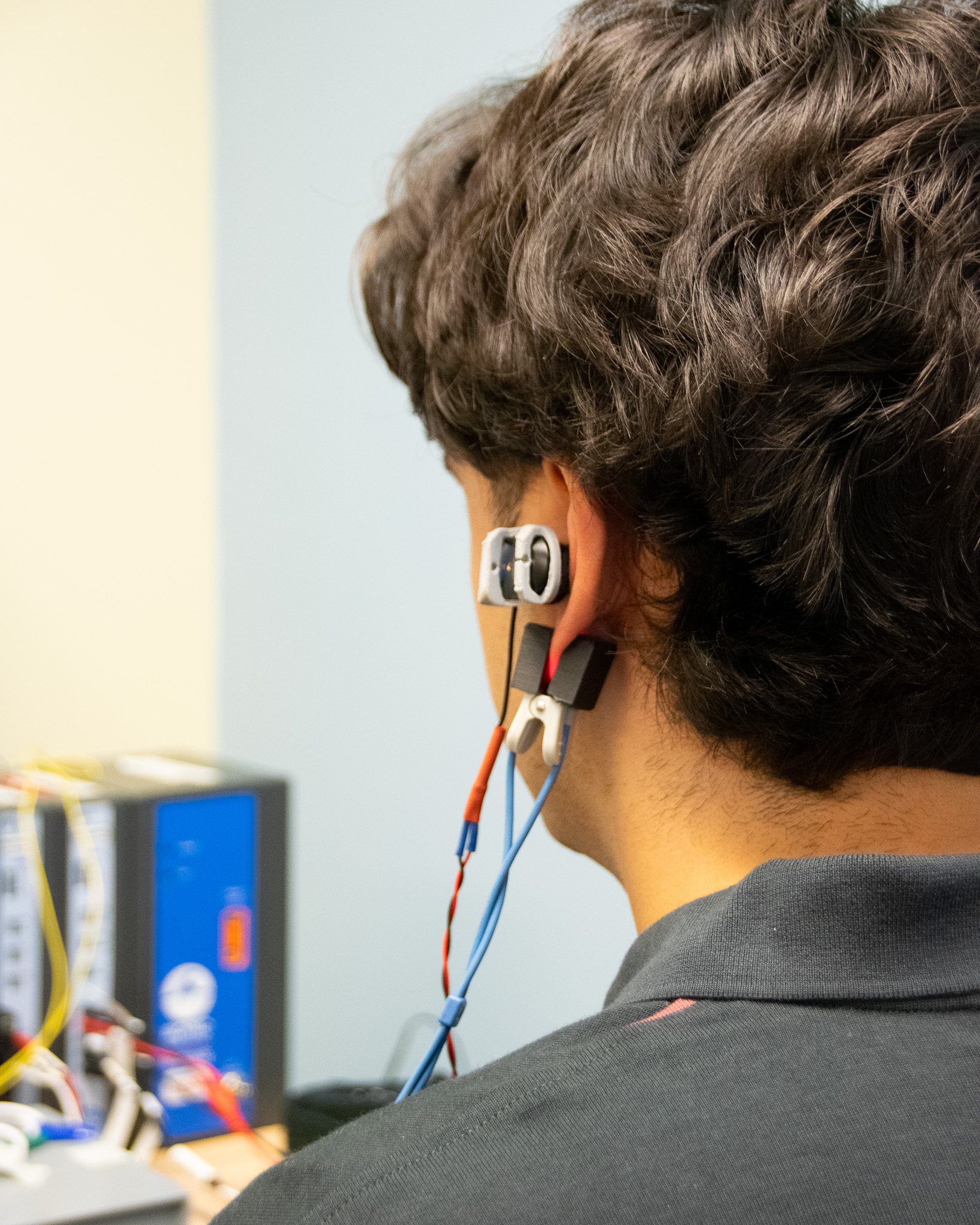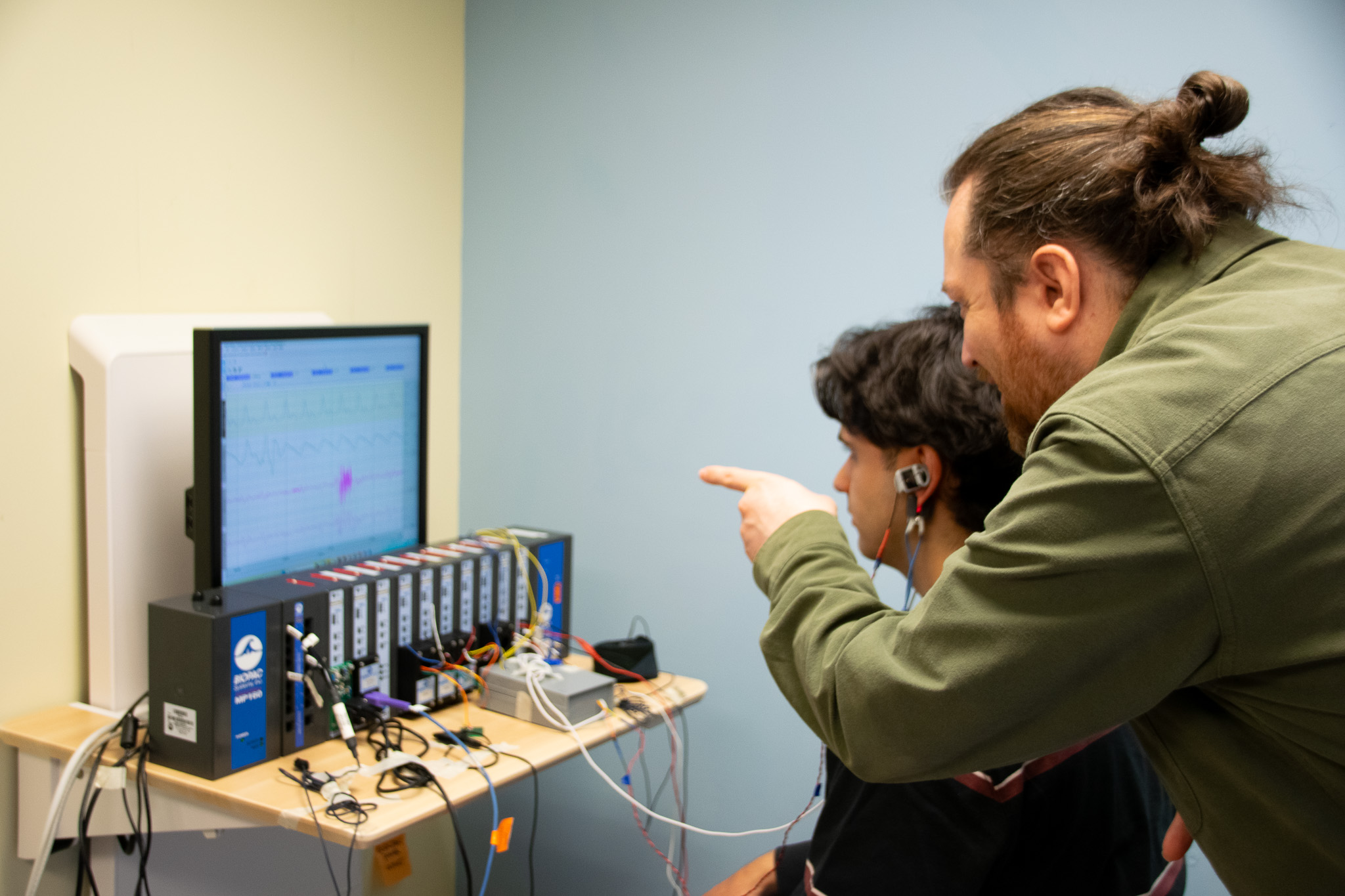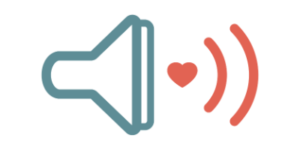TRANSFORM HF’s 2023 Seed Grant recipient Dr. Alex Mariakakis and team want to make blood pressure estimation more accessible to all. Their research looks at leveraging everyday technology – like smartphones and wearables – for this purpose. In this case, it’s using the interior microphone inside the everyday earbud.
We checked in with Ken Christofferson – a PhD student at the University of Toronto and one of the core team members on the project. Merging computational and digital health innovation, Ken’s research uses novel machine learning techniques to acquire information from sensors embedded in common devices and explore how that information can improve health outcomes.

We met Ken in the Heart Function Clinic at Toronto General Hospital (TGH), where he is conducting a pilot study to explore the feasibility of estimating blood pressure using a novel physiological signal captured in the ear canal while wearing earbuds. This technology is used to generate patient health data along with the gold standard – a continuous blood pressure monitor – in UHN’s clinical environment, supported through TRANSFORM HF’s Digital Hub.
Ken shares how the project has progressed over the last few years – and how these small, everyday devices hold big potential to advance equitable cardiac care.
Walk us through this earbud technology. What makes it so unique?
When we began our research, there was limited knowledge around why we can detect heart sounds in the ear canal. It’s not as well understood as photoplethysmography (PPG), where light is used to detect blood volume changes – commonly seen in the back of an Apple Watch. We were the first to discover that the audio signal contains rich information about the pulse wave, or in other words, the velocity at which the blood pressure pulse moves through the circulatory system. This information has given us an opportunity to do something different than what has been done before.
Sites on the body that are used for PPG are typically very small (think the smaller blood vessels running along your wrist), while our earbud technology is likely probing a larger artery, such as the external carotid artery that runs by the ear canal on both the left and right side of the body. We theorize that as it expands, it pushes up against the ear canal, and like a speaker, creates a pressure wave. That pressure wave gets picked up by the microphone in the earbuds.
Using earbud technology to harness this acoustic signal has the potential to yield a high-fidelity representation of the pulse wave, which is correlated with other indicators of cardiac health beyond blood pressure, including cardiac output and changes in vascular resistance – which are super useful in heart failure care.
The other unique thing about this technology is that it doesn’t require manufacturers to make huge adjustments to their devices – no sensor or reshaping required. We’re leveraging an interior microphone in earbuds that are already used in daily life. We think there’s great value in making this device as seamless as possible to help people better manage their blood pressure without having to make a big change.

How has the project evolved since your team was awarded a TRANSFORM HF Seed Grant?
The biggest thing we’ve done is assemble a dataset. As mentioned, this signal was understudied, so there was no large publicly available dataset. I’m thankful to TRANSFORM HF for their support because it has taken significant time and effort to complete.
We’ve demonstrated that by using machine learning, you can recover a signal that’s very similar to the non-invasive blood pressure monitor waveform from the earbud. Using a technique called pulse wave analysis, we’ve shown that we can use this ear canal signal to estimate blood pressure in a way that yields similar results to what you would get from PPG – which is the traditional way of doing pulse wave analysis-based blood pressure estimation.

This year, we began our pilot study in TGH’s Heart Function Clinic. Measurements from outpatient heart failure patients will be valuable in developing and testing algorithms that estimate indicators related to the state of arterial and cardiac function. Together, with commonly available datasets originating from a healthy population, we aim to develop and evaluate methods that use earbuds to estimate indicators of cardiovascular health like blood pressure in ways that are more equitable and inclusive of heart failure patients.
Empowering people with more information about their health can help drive more preventative action.
What do you imagine the impact of this work will be on people who are living with heart failure?
I think there’s great potential for self-management. By building this technology into devices that people already own and use, we hope to lower the barrier to access. It may enable people living with heart failure to do more frequent monitoring given the simplicity of getting measurements. With more data on a consistent basis, you can potentially see warning signs and act sooner to prevent adverse outcomes.
There may also be potential to gain insights around medication titration as patients and clinicians try to figure out what medications, and how much of that medication, work for them. Take hypertension, for example. To monitor their blood pressure, a patient would either have to use a blood pressure cuff at home or visit their healthcare team to determine whether they’re achieving their targets, but that isn’t conducive to how people live in the real world. More frequent measurements from a device that’s used regularly and seamlessly in daily life could offer a better picture of someone’s health, as well as empower patients to self-manage their condition.
TRANSFORM HF regularly offers seed funding to new collaborations and projects. Learn more about these opportunities here.
Interested in future opportunities from TRANSFORM HF? Stay in the know by following us on Bluesky and LinkedIn and signing up for our monthly newsletter.

